As week eight came, and Jeremy back from GDC, we can start putting solid pieces of art and system into the game working.
Iterating on UI layout
If it’s your everyday digital game, putting the UI somewhere over the screen is pretty easy. But in VR space nothing is the same.
The information that needs to be displayed to the player are the following:
- Action points
- 4 Items
- Gems and key
- Who’s turn it is
- Round counter
- Other necessary instructions
Where in space do we put them? The designers put together an initial layout:
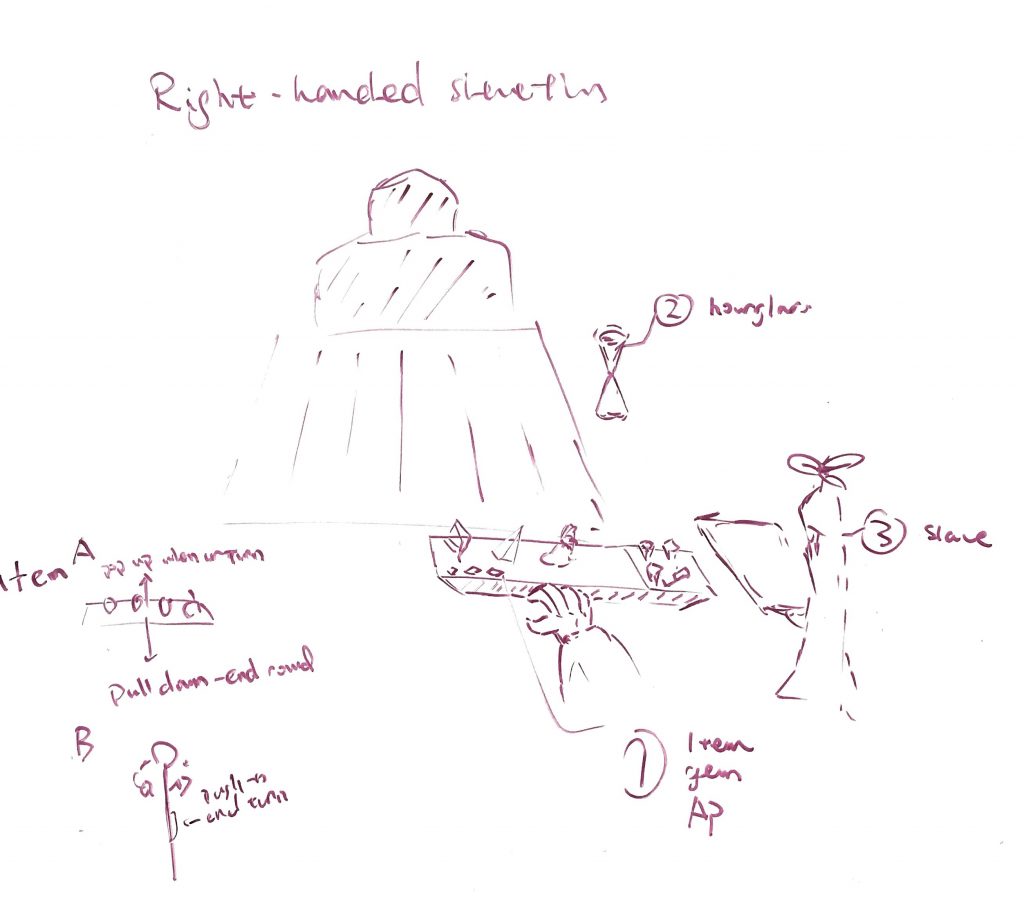
In this case, there are three main parts of the interface:
- “Hovering platform” in front: shows Action Points, items, and gems.
- “Hourglass”: shows the round counter — after each round (4 turns) it’s going to turn upside down.
- “Little Slave” to the right: Gives out instructions, serves as the tool for transporting items to the other player.
For the inventory that exhibits items, we have two designs for it. A) on a panel, and B) rotating around a staff.
After we put these into the game, it was easy to discover that the hourglass would be better on the top of the board, and items are better placed on a panel.
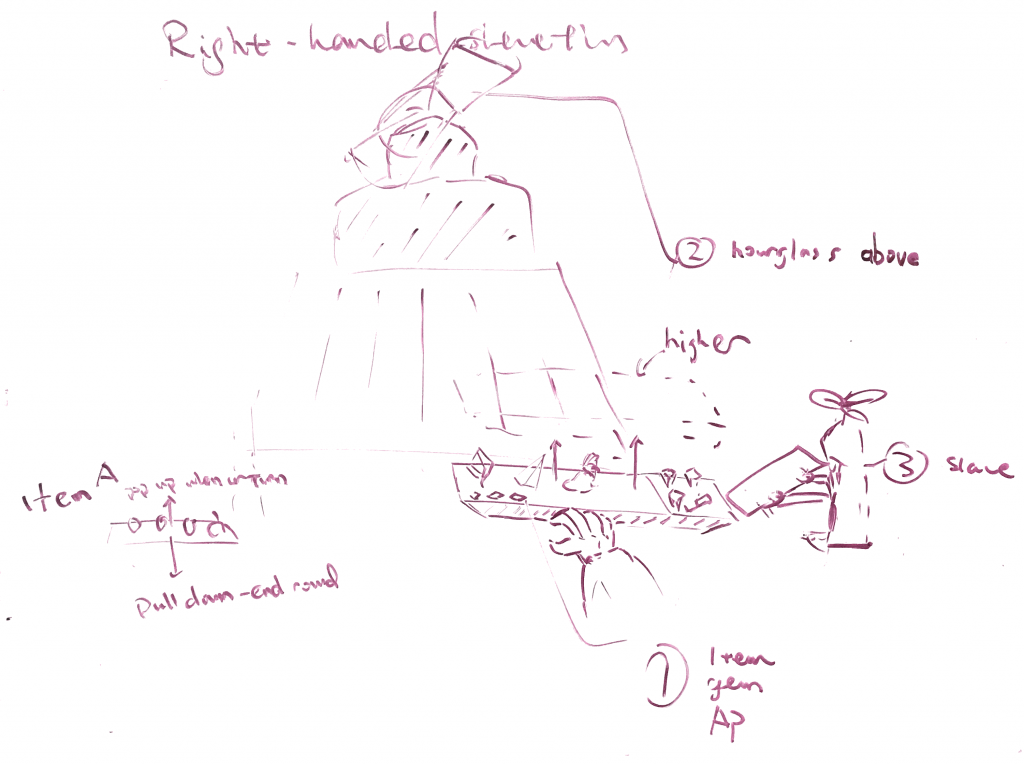
The second iteration proved a lot. We found a clearer design for the Action Points panel and the correct height for the panel to rise and tell you, “this is your turn”.
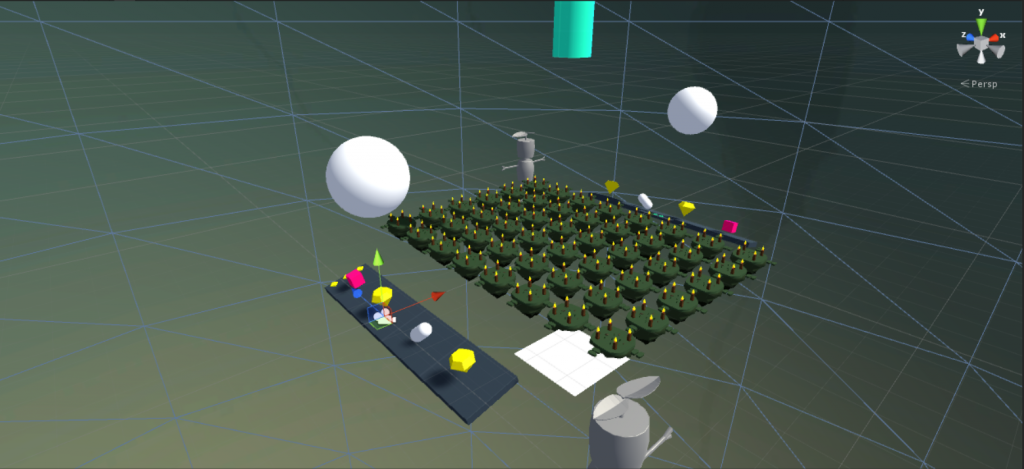
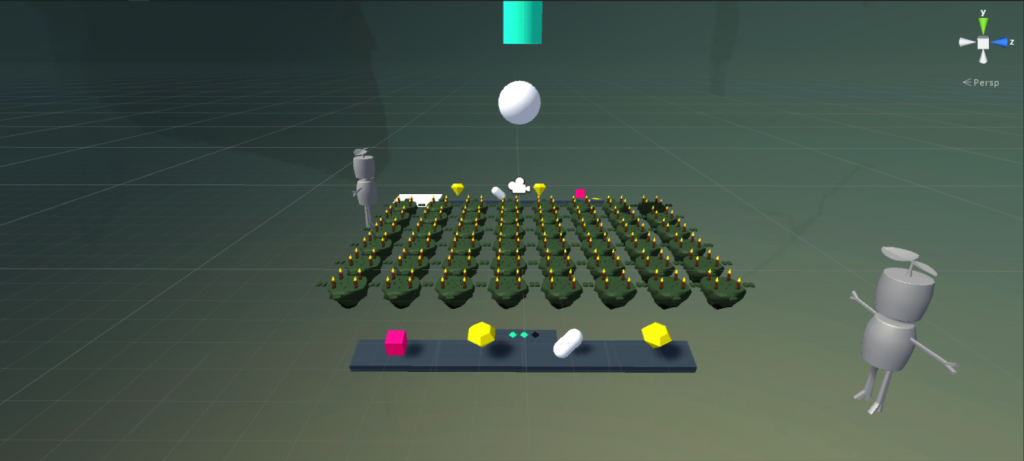
We invited naive playtesters and have them guess what these elements mean — and they worked pretty well.
Developing Inventory
While the designers went on to put art assets into the game, the most important part of the game mechanics — item system, is online.
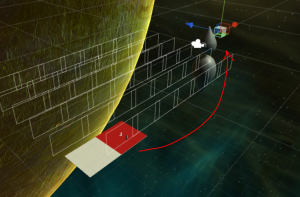
Each item in the space has it’s own identity while the player only stores information about how many items one have. We believe this is the structure that will suit our needs the best.
Bottom line
The week is pretty productive, considering it only consists of four work days. Many assets are put into the game and a handful of problems are fixed through the pipeline. We can expect the game to look a lot more polished by the halves.
